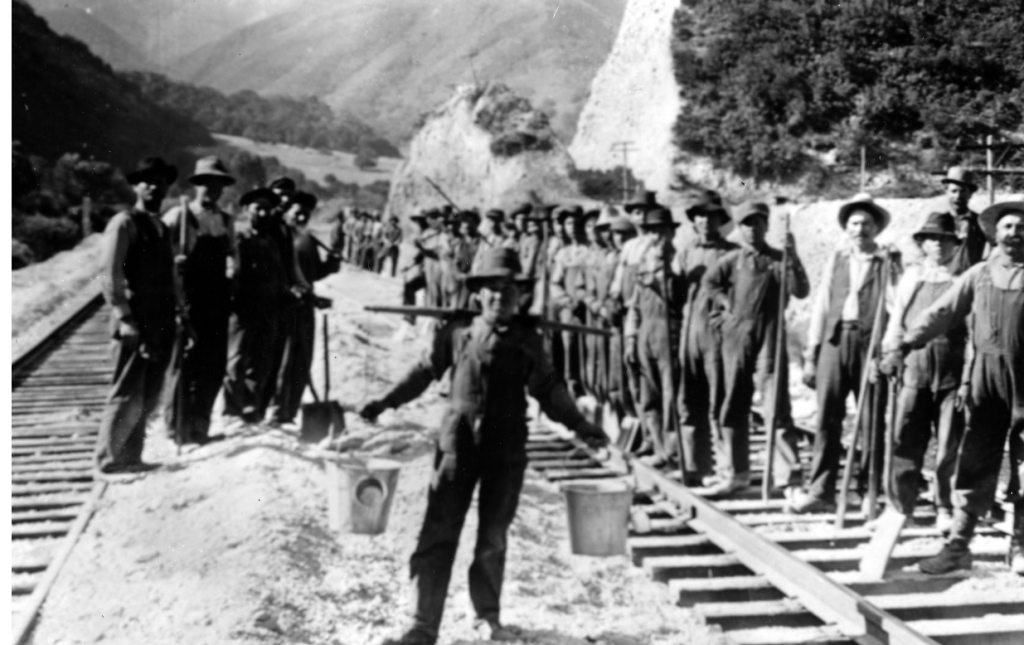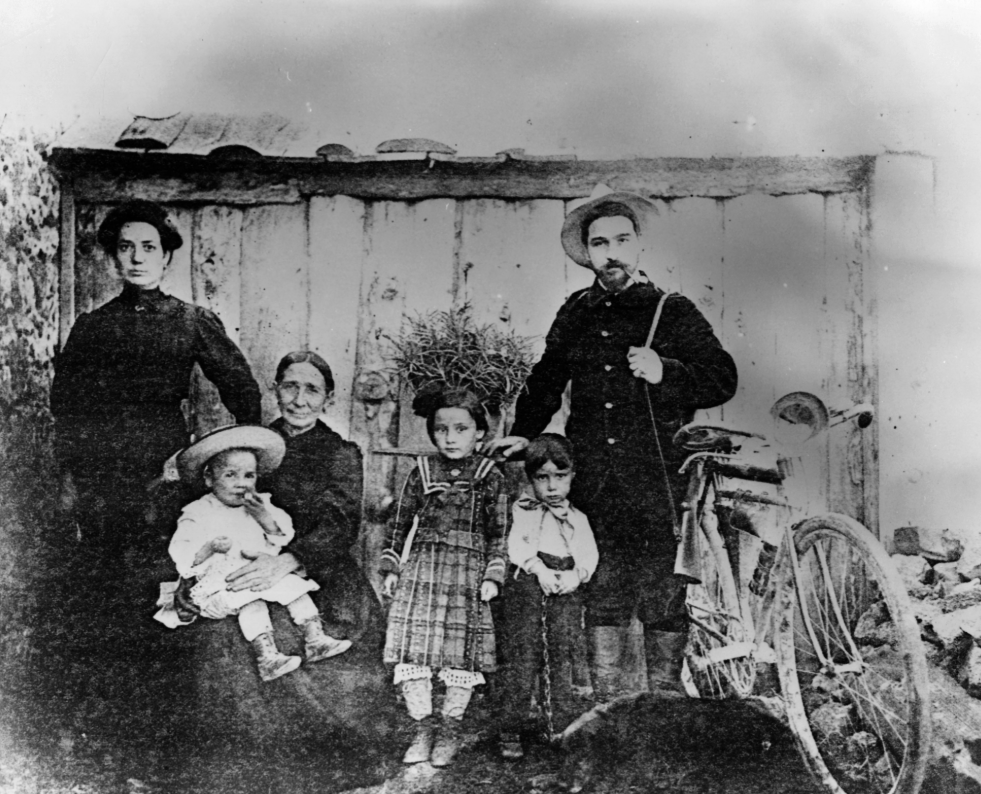Italian Americans began settling in Utah during the 1870s to work in the territory’s growing industrial sector.
More than four million Italian immigrants moved to the United States between 1880 and 1920. Most Italians who immigrated to the United States arrived at Ellis Island, New York. On most days fifteen thousand Italians arrived at Ellis Island. Not all Italian immigrants stayed in New York. Many moved to other parts of the country, including Utah. For example, in 1870 seventy-four Italian immigrants settled in Utah, and almost all of them in Ogden. The Italians who settled here worked in Utah’s factories and mines and for railroads. They contributed their religious, food, family life, language, and clothing to Utah’s diverse cultural backdrop.
Push and Pull Factors

Most Italian immigrants came from Piemonte, Veneto, Abruzzi, Lazio, Calabria, and Sicilia. There were several push and pull factors that resulted in Italians arriving in Utah. Changes in government during the 1860s, along with overpopulation and limited farming options (including sharecropping), were push factors that drove people from Italy. For example, some farmers received only a little money for their farm goods, including grapes and citrus fruits. They wanted to move to a place where they could get a job, have enough food, and a nice home.
A cholera epidemic hit southern Italy from 1884 to 1887. The epidemic was another push factor as Italians left their homes seeking economic opportunity in the United States. Only a small number of Italian immigrants settled in Utah between 1880 and 1920. They joined many other immigrants who moved to the American West because of mining, factory, railroad, and agricultural jobs that pulled them to the region. Some Italian immigrants moved to Utah after joining the Church of Jesus Christ of Latter-day Saints.
Settling
Italian immigrants living in Salt Lake City gathered in the boarding house district that was located on the west side of the city. Many Italian immigrant Utahns worked for the Union Pacific and the Denver & Rio Grande Western railroads. Others owned businesses like grocery stores, saloons, and tailor shops.
Many Italian immigrants lived by one another in areas that became known as “Little Italy.” For example, in 1914 about twenty-five families and some single men lived in a Little Italy that was close to present-day Magna. They lived in shacks they built themselves from boards. The shacks also had iron roofs. The shacks were not warm in the winter, and they did not keep out the heat in the summer. Some Italian immigrants lived in train boxcars in Garfield County. They had no dishes and many of them only lived off milk and coffee.
Working

Many Italian immigrants who arrived in Utah during the 1890s to work in the Carbon County coal fields. The coal companies they worked for, including Pleasant Valley Coal and Utah Fuel, pressured them to trade at their stores and to live in company-owned homes by paying them with company script–or company dollars–instead of American currency. Many coal companies owned homes on their properties and their laborers lived in the homes and paid the company rent. Italian and other ethnic groups worked, lived, and played in company-controlled, self-contained communities.
Building Communities
Italian immigrants built communities and relationships by performing music and publishing newspapers. Many Italian Americans joined groups and read newspapers where they spoke or read Italian. Minatore was a newspaper published from 1908 to 1909. Frank Niccoli published II Corriere D’America, which reported news about Salt Lake City’s Italian community and national stories too. By sharing local and Italian news, Utah’s Italian Americans felt connected to Italy and to the people around them.

Italian immigration reached its apex in 1920, with Utah counting 3,225 Italian-born immigrants in the state. The majority of Italian immigrants lived in Carbon, Salt Lake, and Weber counties. Italian-born Utahns attended church and formed fraternal organizations where they interacted and supported one another. For example, they organized the Italian-American Civic League on January 18, 1934, which is still active today. The Civic League contributed money to charitable causes, including scholarships to Utah’s colleges. They also sponsored an Italian Day at Lagoon Resort in Davis County.
Fighting Discrimination
Italian immigrants faced discrimination from other Utahns. For example, Italian workers went on strike in 1908 because they wanted better working conditions at their mining jobs. In response to the strike, the United States Smelter owned by the American Smelting and Refining Company announced it would not hire immigrants at its smelter in Murray, Utah. Some landlords in Utah cities refused to rent to Italian and other immigrant groups as well. Italian immigration dropped dramatically after Congress passed the Immigration Act of 1924 that significantly reduced the number of immigrants from non-Western European countries allowed to enter the United States. While the number of immigrants dropped, Italian American Utahns continued to interact with one another throughout the twentieth and into the twenty-first century.
Today
Today, Italian American influence is still present in many of Utah’s churches, dining options, architecture, and people. Italian Americans were an important part of Utah’s past, as their cultural presence and hard work shaped Utah’s past and its future.
Keep Exploring!
Return to the Communities page here.
Return to the I Love Utah History home page here.